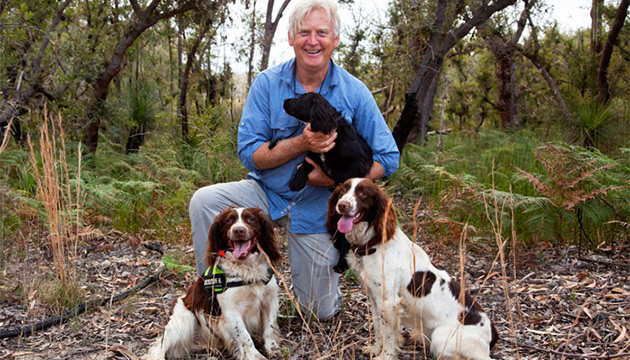Skilled dog trainer Steve Austin and his perceptive charges are at the frontline of conservation and biosecurity surveillance.
Story By Amanda Burdon
Working springer spaniel Bolt is living up to his name, racing through the coastal woodland with his finely tuned nose to the ground. He’s ignoring the competing scents of wallabies, goannas and other native animals, in pursuit of an unwelcome foreigner – the feral cat.
Foxes and cats have exacted a terrible toll in Bundjalung National Park on the New South Wales North Coast. For several years the New South Wales National Parks and Wildlife Service (NPWS) has successfully conscripted Bolt, his fellow canine detectors and their expert handler Steve Austin to sniff out foxes in Cape Byron State Conservation Area and Broadwater National Park. This is the first time that cats have also been targeted using sniffer dogs, in a bid to safeguard threatened shorebirds.
For four days at dawn and dusk, Steve and Bolt have scoured sections of the park, determined to flush and destroy feral cats. Despite receiving information from park rangers on the movements of at least three wily cats, the detection team has so far not seen one. Bolt may be disappointed, but for Steve, at least, that’s good news.
“There are an estimated 20 million feral cats in Australia and each night, on average, they consume about five native animals,” Steve says. “Any bird that hollows is at risk, as well as shorebirds, parrots or quail that nest on the ground, and then there’s the tiny macropods like antechinus that get smashed.
“When I take out a cat or fox there is no feeling like it – for the dog or me. I know I have saved at least five animals that night and maybe it’s the difference between four chicks being raised and flying the nest that season. Every single feral animal we remove makes a difference.”
This Story is from Issue #102
Outback Magazine: Aug/Sept 2015










